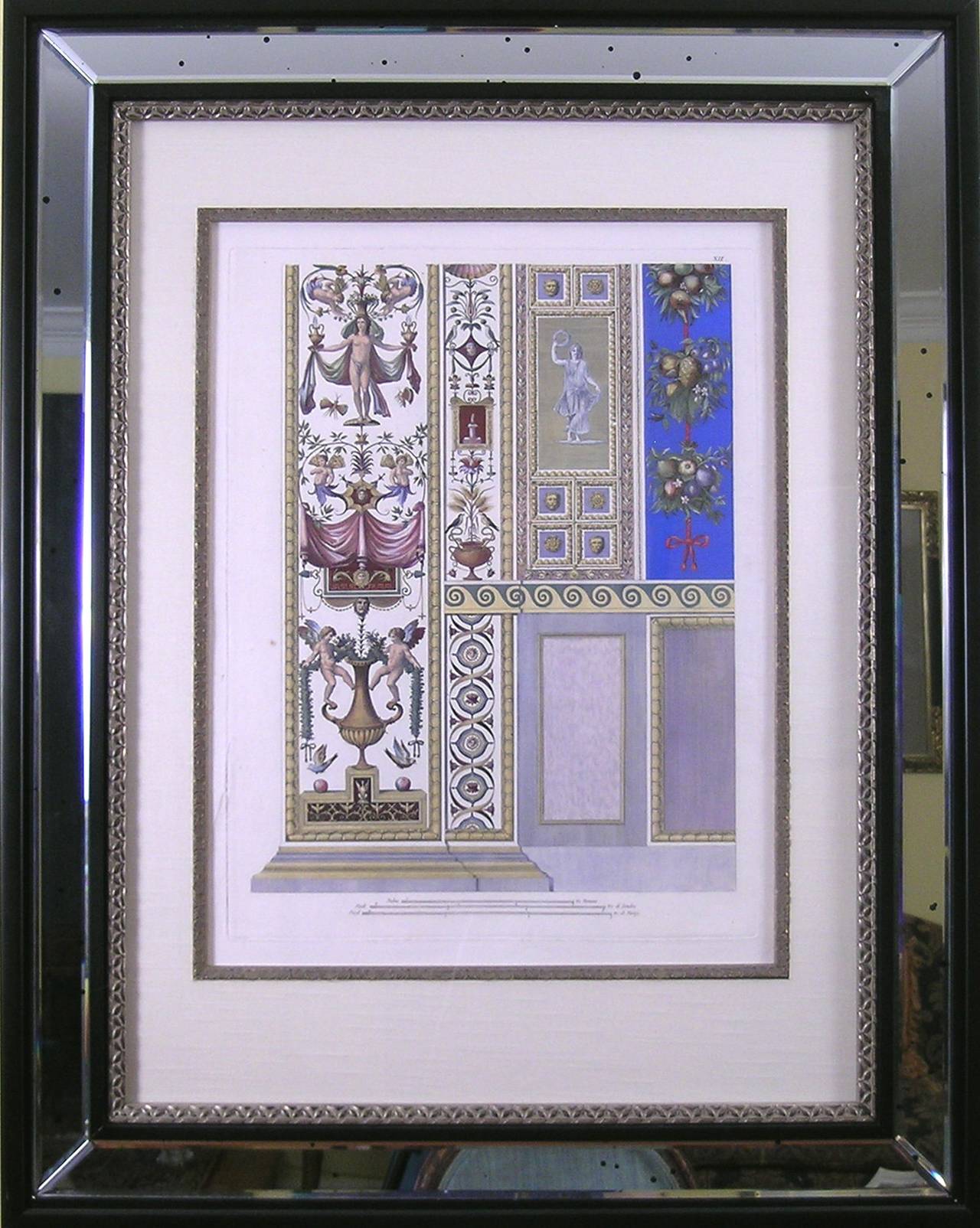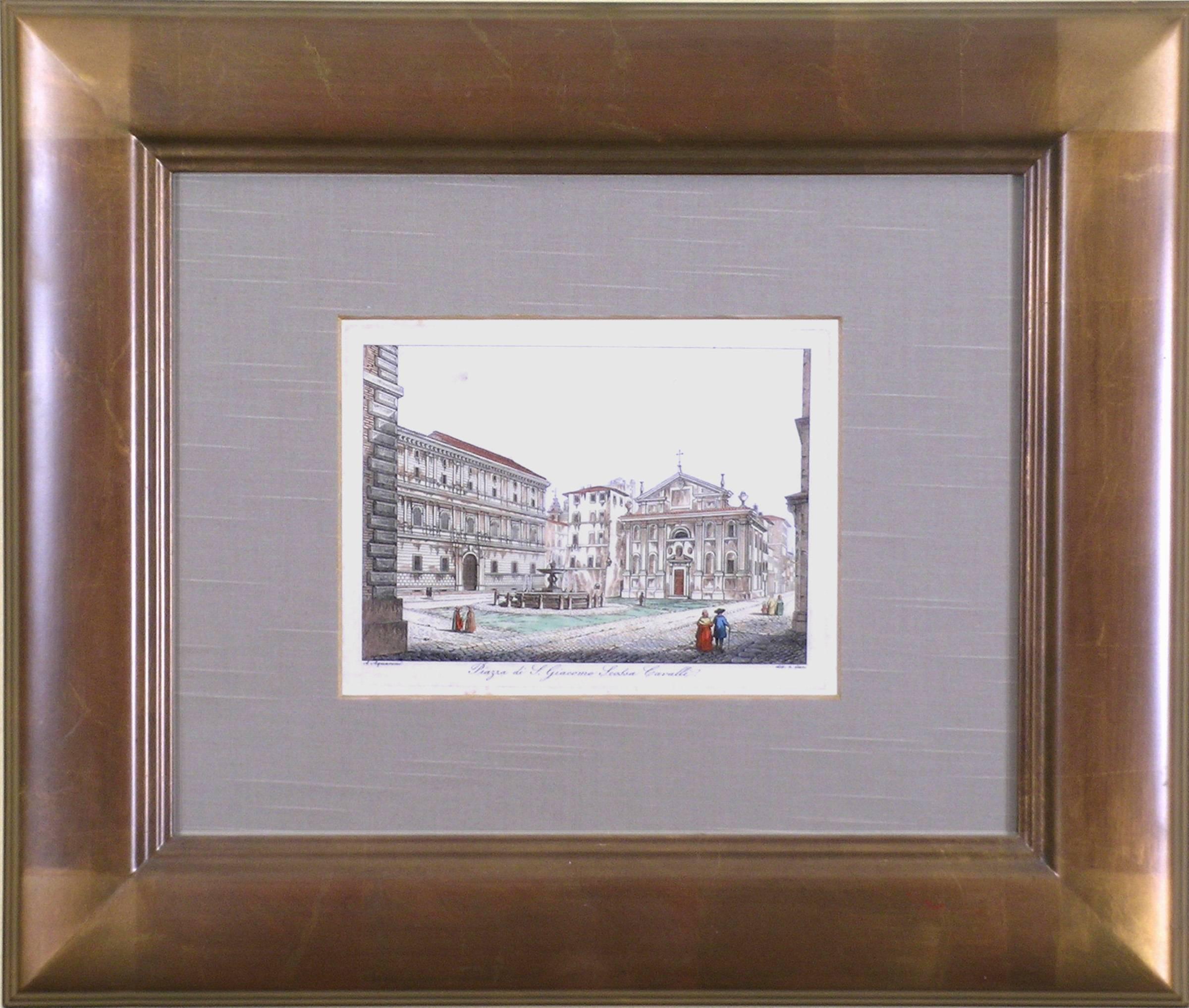Items Similar to Rosa (Roses)
Want more images or videos?
Request additional images or videos from the seller
1 of 7
Basilius BeslerRosa (Roses)1730
1730
About the Item
BASIL BESLER (1561 – 1629).
Hortus Eystettensis.
Konrad Bauer. Altdorf, 1613, 1640, 1713 – 50.
Copper plate engravings with modern hand-color
374 plates. 21 ¼” to 21 ½” x 16” to 18”.
Hortus Eystettensis is without doubt one of the greatest flower books ever produced in any country. The first great florilegium, it is a landmark work in size and scope documenting pre-Linnaean botanical classification. The splendid stylization and aesthetics make it one of the most powerful botanical works ever produced.
Basil Besler, an apothecary of Nuremberg and botanist who managed the garden of Bishop Johann Conrad in Eichstatt, Germany, used it as an encyclopedic resource as the basis for Hortus Eystettensis, observing and depicting over a thousand flowers, representing 667 species. The Bishop's remarkable garden was one of the most extensive in Europe, containing a huge variety of European shrubs and flowering plants, as well as exotic specimens from Asia and the Americas. He endeavored to collect the new and exotic specimens arriving from far away lands. With the Bishop's patronage, Besler worked both as artist and publisher, directing a team of ten artists and engravers in creating 374 plates over a period of 16 years. Horticultural rather than botanical, it is the earliest pictorial record of flowers in a single garden. Summer, Fall, Winter, and Spring each have their own sections. An unparalleled achievement!
As the first large folio botanical, the plates depict over 1000 flowers, many of them exotics appearing for the first time. It would be decades before living examples of certain species were to be seen again. The Bishops’ Eden fell into disrepair after his death and with the outbreak of the Thrity Years War suffered complete neglect. By 1633 the magnificent gardens had ceased to exist. But they would not be forgotten. Besler’s original drawings (most of which are housed in the University Library, Erlangen) took sixteen years to complete. Besler supervised a team of painters and engravers including Domenicus & Raphael Custos, Wolfgang Kilian (stepson of Domenicus), Levin & Friedrich von Huisen, Peter Ilelburch, Johann Leopold, Servaes Raeven, Heinrich Ulrich Heronimus Lederer, et al. This unparalleled group worked between 1608 and 1612 when the last plates went to the printer. The Bishop died on the 2nd of November 1612. Up to that time Besler had received 7500 gold coins in payment. Printed in 1613, only three hundred copies were issued. However, the extensive information and generous depictions would be republished for over a century. For many years it was believed the copper plates on which they were engraved survived until 1817, when they were melted down by the Royal Mint in Munich. However, in 1998, during a reorganization of storage in Vienna’s Albertina Graphic Collection, 329 of the original plates were found. The whereabouts of the remainder remains a mystery.
One hundred and fifty years before Linnaeus created his thorough system of classification, Besler's great florilegium represented an impressive early attempt to classify plants for the benefit of botanists, doctors and apothecaries. Each plant is given a distinct and often descriptive Latin title, and related species are grouped together on the same plate, or over a series of plates. Almost all specimens are shown complete and accurately colored including delineations of their root systems. There were under one dozen copies colored at the time of publication probably for royal or wealthy patrons. Several happily survive in museums and libraries. Today we use them as a basis for coloring.
While Besler's work is obviously motivated by a scientific impulse to document and describe a remarkable collection of species, the beautiful presentation and dramatic stylization of the illustrations also convey a sense of the visual grandeur of the Bishop's great garden. By 1633 the famous garden had become a vegetable plot. Ultimately, this renowned botanical achievement would be plowed under and lost for all time. All the more reason to revere Besler's dramatic endeavor. Each specimen is placed on the page with an artist's understanding of formal and spatial relations. Most notable, the stylized depiction of foliage and root systems betrays a lively baroque sensibility, as the plants seem to dance across the page. The Besler "Florilegium" will hold forever in time a magnificent era of horticulture.
Reference: Hortus Eystettensis: The Bishop’s Garden & Besler’s Magnificent Book. Abrams. NY, 1994.
The Besler Florilegium: Plants of the Four Seasons. Abrams. NY, 1987.
- Creator:Basilius Besler (1561 - 1629, German)
- Creation Year:1730
- Dimensions:Height: 28 in (71.12 cm)Width: 25 in (63.5 cm)Depth: 1.25 in (3.18 cm)
- Medium:
- Movement & Style:
- Period:
- Condition:Framed to museum specifications using archival matting, backing, hinging. Glazed with ultra-violet filtering Plexiglas.
- Gallery Location:Florham Park, NJ
- Reference Number:
About the Seller
5.0
Vetted Seller
These experienced sellers undergo a comprehensive evaluation by our team of in-house experts.
1stDibs seller since 2014
163 sales on 1stDibs
Typical response time: 2 hours
- ShippingRetrieving quote...Ships From: Florham Park, NJ
- Return PolicyA return for this item may be initiated within 1 day of delivery.
More From This SellerView All
- BeansBy Matthäus Merian the ElderLocated in Florham Park, NJMATTHAUS MERIAN, the Elder (1593-1650) Der Fruchtbringenden Gesellschaft Nahmen. Frankfurt, 1646. Engraving with Later Hand-Color. 400 Plates. Image Size 4.5” x 5.25” Unframed. ...Category
18th Century and Earlier Academic Still-life Prints
MaterialsEngraving, Watercolor
- Casa de Crescenzo (Italy)By Antonio AquaroniLocated in Florham Park, NJROMA (Italy) A. Aquaroni. Engraving. Modern Hand-Color. Rome, Italy 1750. Ever wonder what pre-dated the postcard? By the mid-eighteenth century, travel and exploration had be...Category
1750s Academic Prints and Multiples
MaterialsEngraving, Watercolor
- Ponte Gianniculense (Italy)By Antonio AquaroniLocated in Florham Park, NJROMA (Italy) A. Aquaroni. Engraving. Modern Hand-Color. Rome, 1750. Ever wonder what pre-dated the postcard? By the mid-eighteenth century, travel and exploration had become a...Category
1750s Academic Prints and Multiples
MaterialsEngraving, Watercolor
- Acquedotto de Sisto Quinta. (Italy)By Antonio AquaroniLocated in Florham Park, NJROMA (Italy) A. Aquaroni. Engraving. Modern Hand-Color. Rome, Italy 1750. Ever wonder what pre-dated the postcard? By the mid-eighteenth century, travel and exploration had be...Category
1750s Academic Prints and Multiples
MaterialsEngraving, Watercolor
- Bradypus (Three-toed Sloth)By John WilkesLocated in Florham Park, NJJOHN WILKES (1750-1810) Encyclopedia Londinensis after Reinhold and Edwards London, 1801-1828 Copper Plate Engraving Original Hand-Color 9” x11” Unframed At its best, the z...Category
Early 19th Century Academic Prints and Multiples
MaterialsWatercolor, Engraving
- XLII. Ram's Head UrnBy Sir William HamiltonLocated in Florham Park, NJ...Etruscan, Greek and Roman Antiquities.... Hamilton, Sir William. 1730 – 1803. Collection of Etruscan Greek and Roman Antiquities from the Cabinet of the Hon. W. Hamilton. 4 vols. Naples, 1766-7. D’Hancarvills, sculpt. Aquatint Engravings in Black and Terra Cotta Inks. Finishing in Original Hand-Color. In 1764, Sir William Hamilton arrived in Naples to take up his new appointment as British Envoy Extraordinary to the Bourbon Court of King Ferdinand IV. At the time of his arrival, Italy was still a largely untapped field of archaeological discovery and there was ample opportunity for the private individual to amass a collection or 'cabinet' of classical antiquities at relatively little expense. The sites of the buried cities of Pompeii and Herculaneum, although now under Royal control, were still being only haphazardly excavated and were openly vandalized. Hamilton himself complained of the fact, but also seems to have taken advantage of it. Hamilton's first collection was in fact acquired by the British Museum in 1772 where it formed the foundation of the now great collection of Greek and Roman antiquities. This was the first major collection of Greek vases (or, as they were then known, Etruscan) to reach England's shores. "To Hamilton belongs the merit of being the first to appreciate with warmth the severe beauty of their shapes, colouring and drawing, the mingled simplicity and feeling of the designs figured upon them; and it was he who recognized the value of these unpretentious vessels for forming and ennobling modern art-taste". (Adolph Michaelis, Ancient Marbles in Great Britain, Cambridge 1882, p. 110) Hamilton found a worthy ally in Josiah Wedgwood who was setting up a new factory appropriately called "Etruria". Opened in June of 1769, Wedgwood was to use Hamilton's models again and again in his pottery with many designs taken directly from the engravings. Etruscan antiquities...Category
18th Century and Earlier Academic Prints and Multiples
MaterialsEngraving
You May Also Like
- Flowering Peppermint Plants: A 17th C. Besler Hand-colored Botanical EngravingLocated in Alamo, CAThis is a hand-colored copper plate engraving entitled "Pulegium Cervinum, Pseudo Pulegium Struthium, Pulegium Regium", depicting flowering Peppermint, Weld and Pennyroyal plants res...Category
1640s Academic Still-life Prints
MaterialsEngraving
- “Haughton in the County of Nottingham” (Near Newark Upon Trent)By Johannes KipLocated in Southampton, NYAn original hand colored engraving by Johannes 'Jan' Kip (1653-1722) of Haughton in the County of Nottinghamshire, one of the seats of Prince John Duke of ...Category
Early 1700s Academic Landscape Prints
MaterialsEngraving
- “Scene in Union Square, New York on a March DayBy Winslow HomerLocated in Southampton, NYOriginal wood engraving on paper. Taken from Harper’s Weekly, April 7, 1860. Signed “Homer” in the plate. Condition is good. Slight staining lower left. Very slight tear to the l...Category
1860s Academic Figurative Prints
MaterialsArchival Paper, Engraving
- “Innocent Captivation Amusement Pastorale”By Anthony CardonLocated in Southampton, NYOriginal stipple engraving on a verge type of hand laid paper. The overall size of the engraving is 15.75 inches by 12.75 inches The image size of the engraving is 14 inches by 12 i...Category
Early 1800s Academic Figurative Prints
MaterialsEngraving, Laid Paper
- Portrait of a man by Hans Berger - Drawing 44x50 cmLocated in Geneva, CHWork on paper Ed: 1 /100Category
Early 20th Century Academic Portrait Prints
MaterialsEngraving, Crayon
- Portrait of woman by Gustave François - Engraving 44x54 cmBy Gustave Francois (Barraud)Located in Geneva, CHWork on paper without frameCategory
Mid-20th Century Academic Portrait Prints
MaterialsEngraving
Recently Viewed
View AllMore Ways To Browse
Country Roses
Antique Rose Art
Antique Rose Color
The Bishop
Rose Dancer
Botanical Rose
Four Roses Antique
Antique Rose Drawing
Rosa Antique
Vegetable Print
Antique Colored Roses
Antique Rose Prints
European Botanical Art Prints
Nuremberg Print
Vienna Rose
Raphael Engraving
Copper Engraving Germany
Botanical Book Prints




